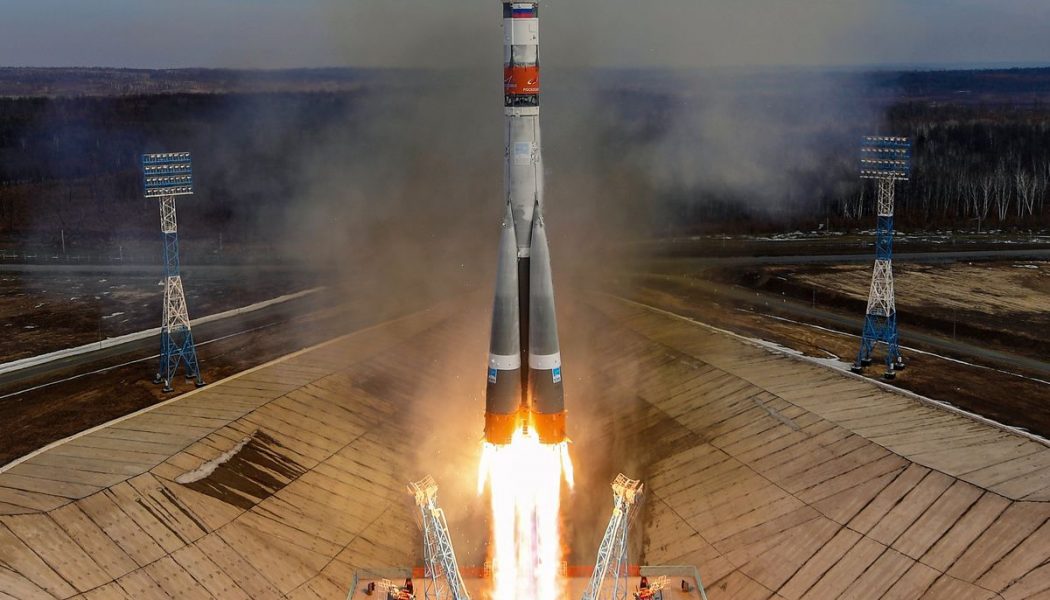Rival satellite internet companies OneWeb and SpaceX are vying to snag lucrative deals to provide broadband internet to Earth’s northernmost latitudes. OneWeb’s launch of 36 satellites this week inched it closer to its goal of beaming internet into the region by year’s end. SpaceX’s Starlink, which is already providing internet to thousands of consumers through a beta program, is eyeing the same area.
Billions of dollars in government funds are on the line for companies that can connect the region. The Arctic is a nearly broadband desert for the US military, and the UK is willing to spend big to connect rural areas to the internet.
SpaceX is reportedly eying a chunk of the UK’s new $6.9 billion Project Gigabit program, which aims to provide “lightning-fast” broadband internet to areas with little to no internet access. OneWeb is also in talks with the program, the company’s government affairs chief Chris McLaughlin told The Verge. OneWeb, a UK-based firm, which was rescued from bankruptcy last year by the British government and Indian telecom giant Bharti Global, thinks it has an advantage in that race.
McLaughlin brushed off SpaceX founder Elon Musk’s foray into the UK’s rural internet program as “a classic piece of Mr. Musk fluff.” Musk’s bid for the subsidies, McLaughlin said, “tries to suggest that there is a huge pot of gold waiting in English fields that he can pick up.”
“We’ve also had conversations with [UK Minister for Digital Infrastructure Matt Warman], and indeed with his boss, and indeed with his boss’s boss, on what could be done with OneWeb,” McLaughlin said in an interview, predicting the Gigabit awards would go to numerous telecom providers that will work together. OneWeb hopes it can “repay the confidence in the UK government” in its bid for rural internet subsidies, he said, reciprocating the government’s help in pulling OneWeb out of bankruptcy.
:no_upscale()/cdn.vox-cdn.com/uploads/chorus_asset/file/22400288/ExT_bv5WUAI_1VH.jpg)
“5 to 50”
Wednesday night’s launch of 36 internet satellites put OneWeb’s total constellation at 146. The company’s initial plans to cover the Arctic with internet by 2020 were derailed by bankruptcy. Now, it has a new “5 to 50” goal: a countdown of five launches to enable coverage everywhere north of “50” degrees latitude. A December launch marked the first, Wednesday’s launch was the second, and the company aims to hit the fifth launch in June.
Unlike SpaceX’s constellation, which orbits the planet closer along equatorial lines, OneWeb’s orbits from pole to pole, meaning Earth’s traditionally internet-quiet northern and southernmost regions will soon be a bustling satellite intersection for the company’s network. McLaughlin said the next generation of OneWeb satellites will probably have optical links, which enables the satellites to talk to one another in space. That could reduce the need for pricy ground stations in hard-to-reach areas in the Arctic.
OneWeb hasn’t released designs for user terminals or monthly pricing plans, and its planned constellation of 648 satellites is much smaller than SpaceX’s. But “less is more,” McLaughlin says. Satellites in higher altitudes can beam to wider swaths of the Earth (imagine shining a flashlight on a table, and the cone of light gets wider the farther you pull it away). The downside to satellites in higher altitudes is greater latency, or the time it takes data to transfer between the satellite and its destination.
SpaceX’s Arctic goals
SpaceX, on the other hand, is further ahead with its satellite network, propelled by lofty funding rounds and cash from its billionaire founder. It has launched over 1,300 Starlink satellites into a lower orbit than OneWeb’s constellation, and that’s just a fraction of its planned 30,000-large constellation. The company this year rolled out an open beta phase for consumers in the US, UK, Canada, Germany, and New Zealand, offering a Starlink terminal kit for $499 and $99 per month thereafter to at least 10,000 users, with many elated by the network’s speeds of 120 megabits per second.
SpaceX got last-minute regulatory approval to launch its first 10 polar-orbiting Starlink satellites in January, and it’s lobbying the Federal Communications Commission for permission to loft dozens more satellites in polar orbits, where it can “bring the same high-quality broadband service to the most remote areas of Alaska,” it said in a filing.
SpaceX sees that area as particularly valuable for the US military, and the company has been courting the Pentagon in recent years. As the US Northern Command eyes commercial options to bring faster internet to the Arctic, an increasingly contested domain between the US and Russia, Pentagon officials have visited SpaceX (and OneWeb) facilities along the way. And the Air Force’s Global Lightning program, which, in 2018, awarded SpaceX $28 million to test Starlink on military planes, is nearing a new phase to dole out contracts for satellite internet in Arctic regions.
:no_upscale()/cdn.vox-cdn.com/uploads/chorus_asset/file/22400267/1000w_q95.jpeg)
The military interest for better Arctic internet was clear last year, when Gen. Terrence O’Shaughnessy, the former commander of US Northern Command, asked Congress for $130 million for a polar communications program that would leverage Starlink and OneWeb. Months later, Gen. O’Shaughnessy retired to privately consult SpaceX, according to two people familiar with the move, speaking under anonymity to discuss personnel matters. As The Wall Street Journal reported last year, it’s unclear whether O’Shaughnessy is fully employed by SpaceX or is a paid contractor. SpaceX didn’t return requests for comment. O’Shaughnessy, through a spokesperson, could not be reached for comment.
An increasingly important Arctic
In recent years, the US military has scrambled to rethink its strategy in the Arctic as a rapidly changing climate melts the region’s ice caps, redrawing key shipping routes and opening up new ones for naval vessels and submarines. The push for Arctic broadband is part of that shift in strategy. Commanders need better communications and internet access for ships and planes now that the region’s barriers to movement are literally melting away, shaping a new stage of competition between the US, Russia, and China.
“It’s been an important region for a while, but is growing in importance,” says Chris Quilty, a partner and satellite industry analyst at Quilty Analytics. “Most of the communications satellites that exist today are flying over the equator, and they can’t see the polar region — it’s just too high of an altitude with the curvature of the Earth.”
Some existing satellites in higher orbits provide data services to the polar regions, but those are limited, especially for the military’s growing demand for data. OneWeb and longtime satellite operator Telesat’s proposed satellite network, which will partially orbit Earth from pole to pole, are aiming to fill the Arctic data gap. SpaceX is awaiting FCC approval to send 348 more satellites into polar orbit, realizing the demand from “Federal broadband users for which there could be significant national security benefits.”
While SpaceX’s Starlink wades into polar orbit, the orbital design already approved for OneWeb’s constellation gives it an Arctic advantage. For OneWeb, “all the satellites cross over the polar region, so the highest concentration of their capacity is in the polar regions,” Quilty says. “So that opens up the opportunity of going from being in a position where there’s a shortage of data, where there’ll be a massive amount of data available.”










